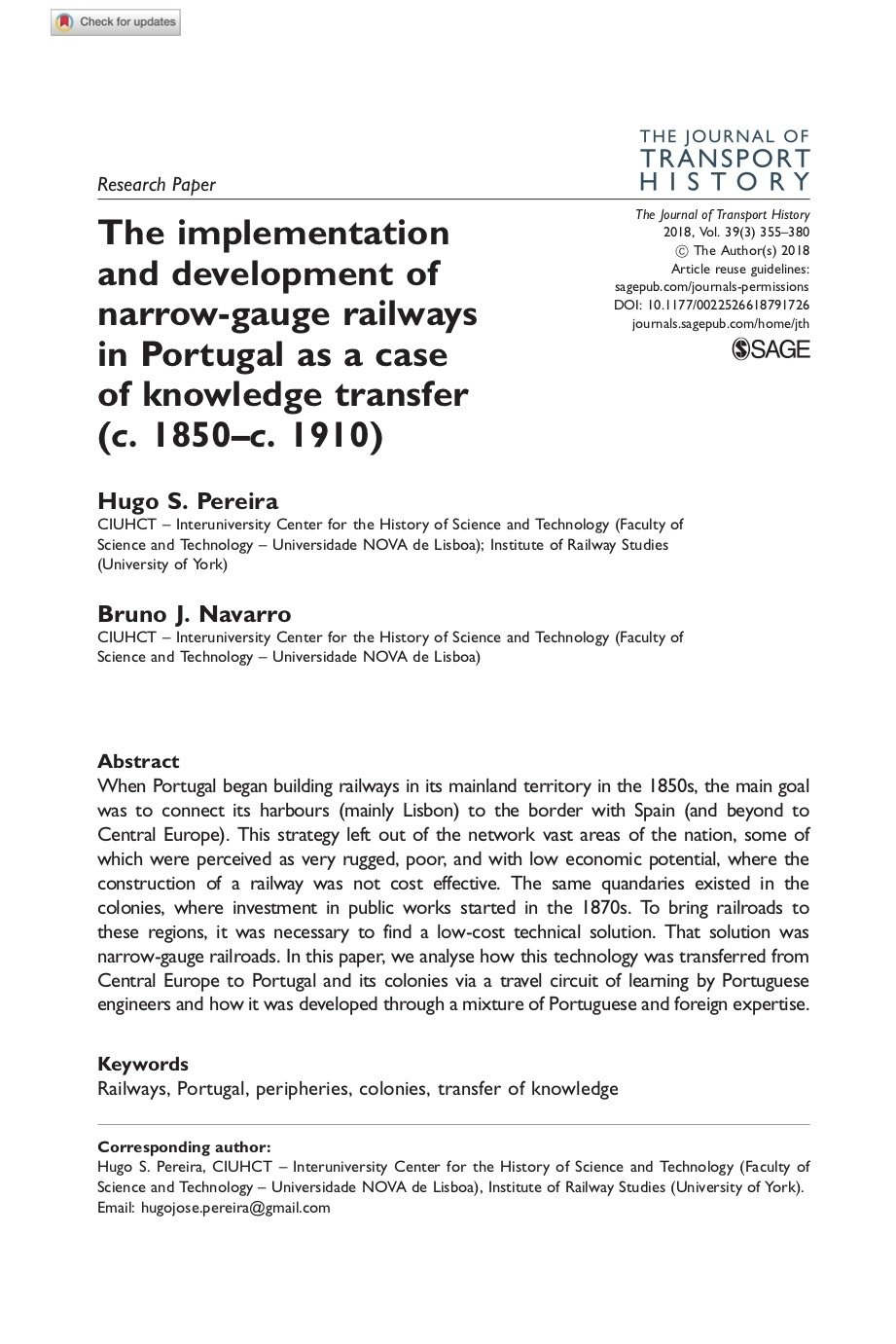The implementation and development of narrow-gauge railways in Portugal as a case of knowledge transfer (c. 1850–c. 1910)
- Author(s)
- Publisher
- Vol. 39 (3)
- Year
- 2018
- Journal
The Journal of Transport History
- Nr. of Pages
- 355-380

Abstract
When Portugal began building railways in its mainland territory in the 1850s, the main goal was to connect its harbours (mainly Lisbon) to the border with Spain (and beyond to Central Europe). This strategy left out of the network vast areas of the nation, some of which were perceived as very rugged, poor, and with low economic potential, where the construction of a railway was not cost effective. The same quandaries existed in the colonies, where investment in public works started in the 1870s. To bring railroads to these regions, it was necessary to find a low-cost technical solution. That solution was narrow-gauge railroads. In this paper, we analyse how this technology was transferred from Central Europe to Portugal and its colonies via a travel circuit of learning by Portuguese engineers and how it was developed through a mixture of Portuguese and foreign expertise.